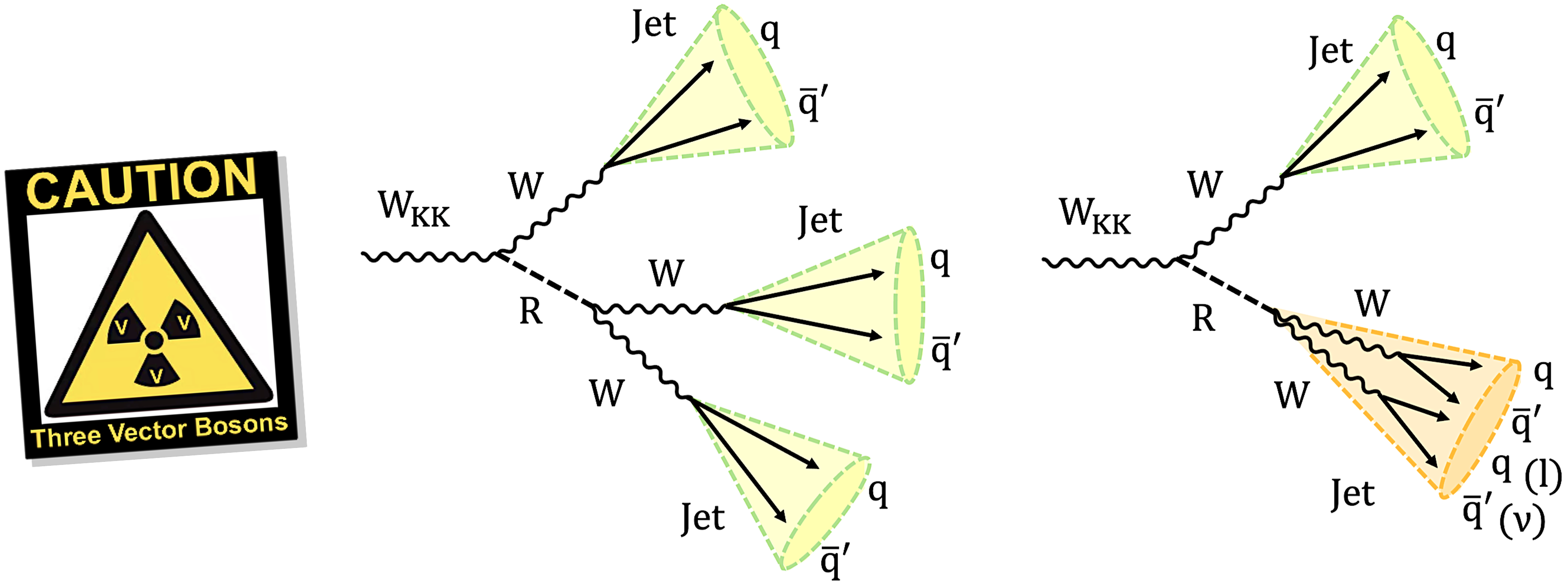
Apart from the “World Wide Web,” three Ws may also have a different interpretation in the LHC era. The standard model of particle physics is a mathematical construct that connects three of the four fundamental forces of nature and classifies all known elementary particles. Among these particles, the "W boson" plays a crucial role in various physical phenomena. For example, it is responsible for the radioactivity affecting the stability of nuclear, atomic, and stellar matter.
While the standard model describes the vast majority of the observed behaviour of elementary particles it is likely not the complete theory of nature at the subatomic scale. Until now, we have not seen convincing proof for physics beyond the standard model. But that is no excuse to relax. Interestingly, some of the proposed theories for beyond the standard model physics describe a universe with new exotic particles propagating in extra spatial dimensions, which are not perceptible in our usual spacetime. If such new particles exist and are not too heavy, they could be produced momentarily in the LHC proton collisions. One such resonance, called WKK , can decay into three W bosons in a cascade process involving another new particle R. Figure 1 illustrates such a hypothetical production of the triple W bosons or "Triboson". The W bosons also are short-lived and decay most frequently to a pair of quarks which, by their nature, end up in the detector as a directed spray of particles which we call “jet.”
The CMS experiment has a rich physics program to look for beyond-the-Standard-Model physics and has recently completed a new search for a triple W-boson resonant signal. This is the first-ever search of this kind, where all three W bosons decay via quarks to produce signals of multiple jets. Depending on the WKK and R particle masses, the final state observed in the detector will have either three or two fat jets denoted here by cones. Both these two topologies are simultaneously investigated in the search.

Figure 1: Illustration of the predicted WKK particle decaying via cascade into three W bosons, where each W decays to a pair of quarks, resulting in a three or two fat jets final state. The jets contain at least two quarks and are shown as cones.
The challenge for this analysis was distinguishing the signal of the three W-boson-originated jets from the other (multi-jet) background processes that appear in the LHC million times more frequently. The distinction could be achieved by utilizing two features of the jets. For the signal, the fat jets have substructures, indicating that they originate from multiple quarks. Further, the signal jets have mass indicating their origin of massive particles. The physicists in the CMS experiment exploited such properties of the signal and deployed algorithms based on Deep Neural Networks, which could efficiently distinguish the signal from the background. Data from collision events, such as the one shown in Figure 2 containing three W-boson-candidates, are selected for an statistical analysis.
Figure 2: An interactive display (try zooming and/or rotating!) of a collision event featuring three fat jets, illustrated with yellow cones. Each jet has substructures indicating a two-quark system and corresponds to the production of W boson. The transverse momenta of the jets are quite high and are measured to be 904, 498, 272 GeV/c. This particular reaction involved a huge amount of energy, almost 4 thousand GeV, brought in by the participating constituents of the colliding protons. Compare this with the collision energy of the protons, 13 thousand GeV! Or view the interactive event display on this separate page.
The characteristics of the data agree with the standard model’s expectation and no indications of any exotic Triboson signal have been revealed. Therefore, the search constrained the parameters of the theoretical model predicting such signal events originating from massive resonances of extra spacetime dimension.
This result opens a new window for our LHC data exploration. The traditional two-object resonant searches have been extended to look for three-object potential resonant signals. This new type of search may reveal in future hints of new physics which will complement our current understanding of the universe.
Read more about these results:
- CMS Physics Analysis Summary "Search for resonances decaying to three W bosons in the hadronic final state at √s= 13 TeV"
- All CMS physics briefings
- All CMS results
- Do you like these briefings and want to get an email notification when there is a new one? Subscribe here

